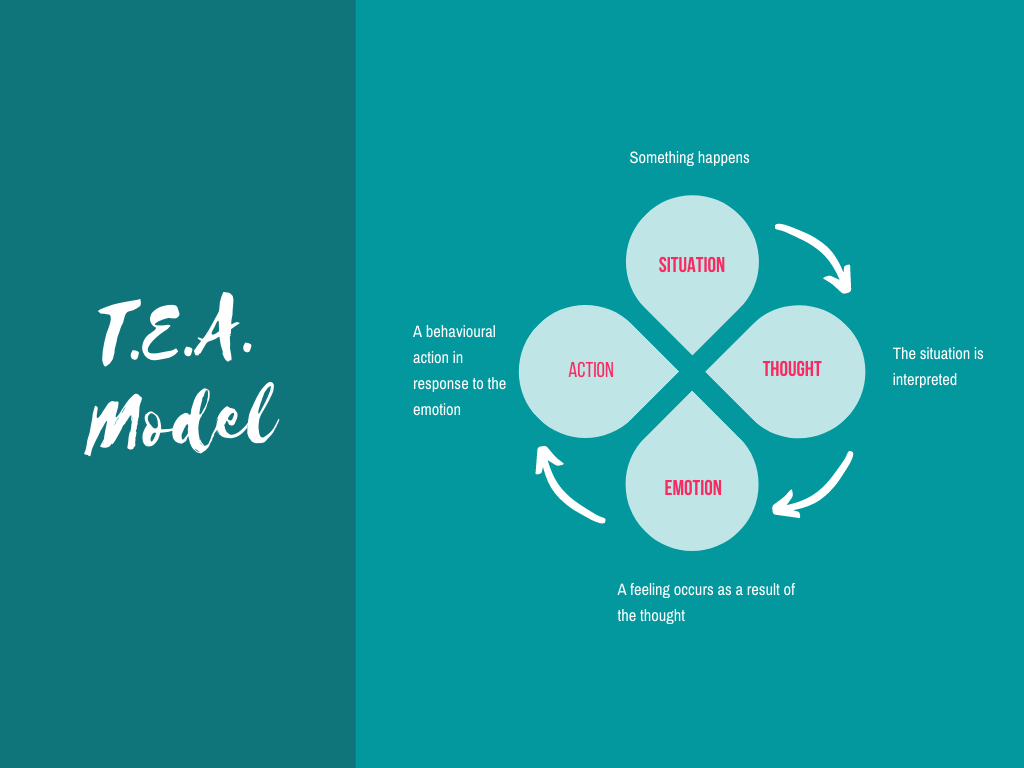It’s not uncommon to hear someone making a decision based on their gut feeling. I’m one of those people who usually allow my emotions to lead the direction towards my future. But if you truly dig deep, these emotions are indicators… triggers because of a thought that was associated to that situation.
We could either have a negative or positive thought about a situation. Naturally, our brain is wired to protect us from danger, so any negative thought triggers a warning signal that causes a fight or flight response. On the contrary, a positive thought gives us happy emotions and releases oxytocins into our body.
Our thoughts are really the stories we tell ourselves which then impacts our emotions, and finally our actions. When a situation happens, it triggers a particular emotion. Pause, and start thinking about your thoughts and where they are coming from.

When I think about this current coaching journey I’m on, and how it all began, it started from a few scenarios. From 2012-2014, my photography business grew and at the same time, I became a mother to 2 children. I was shooting weddings almost every other weekend, sometimes breastfeeding in between shoots or hiding in toilets to pump breastmilk so I could get through the day, traveling and working many hours. While success looked exciting at that point in time, my body began to be tired and I became burnt out.
Soon, the thought occurred to me… “What could I do if I was no longer a photographer?” It triggered a series of dreams from then on, but the turning point came as I was reading Shannah Kennedy’s Life Plan book around 2017. It was the first time I came across the words “Life coach”. When I found out more about coaching, it brought about such an excitement that resonated with my entire being.
That excitement drove me to discover more…to dream more… and then in 2019, a friend of mine told me about Mel, which lead me to enrol in this course in 2020.
What a journey! It took me some years, but certainly, this model explains how my thoughts led to my emotions, which drove my actions!
As I think about my ideal client (individuals who want to live their best lives, parents and couples who want a healthy marriage and family life…), some of these questions can certainly help me during a coaching session:
Pertaining to Thoughts
1. Why are you faced with this challenge?
2. What is the best / worst case scenario?
3. Who is affected by this?
4. Where are there areas for improvement?
5. When will you know you succeed?
6. How does this thought affect your future?
Our Emotional States
1. How does my mood affect my decision making?
2. What are the reasons for my current emotional state?
3. How can I be more pro-active instead of reactive?
4. How can I face this challenge differently, the next time it arises?
5. What do I not like about a particular situation, specifically?
6. How does my feelings relate to my values?
Taking Action
1. What would a perfect day look like to you?
2. What’s holding you back?
3. Who can support you?
4. What action could you take tomorrow?
5. On a scale of 1-10, how excited are you about that?
6. If you don’t do this now, what will happen in the long run?

9 strategies for mental health
While treating mental illness is not part of coaching, we can certainly help our coachees retrain their mind by asking the right questions that will help break them out of their tunnel vision. New information brings about a new perspective, and that is where our coachees can see breakthroughs. Here’s 9 strategies as shared by Coach Mel:
1. Identify and reframe patterns – it could be a holding pattern that the coachee is stuck in (round and round with no commitment, they are good at starting but they are not good finishes… or the reverse). When they are thinking of something in a negative way, we have to help them reframe by asking questions that lead towards positive points instead.
2. Challenge your beliefs – For example, when a coachee says, “I have a difficult employee” We could ask them, “What does difficult mean to you?” Perhaps a new employee has a similar pattern to another employee that left. Our role is to disarm the table of beliefs. Perhaps it could be replaced by an empowering belief, eg people can change and have potential.
3. Confront your fears and phobias – Exposure therapy is technique to help people confront their fears by exposing them to that very source itself without any harm done.
4. Journal thoughts (- / +) and behaviours – Ask ourselves what kind of behaviour is activated from a thought. It helps us make connections in our mind.
5. Predict “What will happen” scenarios – Play it out in our head, then we might realize that the situation is not that bad after all.
6. Role playing through behaviours – Imagine that we are taking those steps in a role play and feeling the emotions associated with it – for example, role playing what a good manager looks like in our mind.
7. Activity scheduling to lock in activation (habits) – When we do this, our brain thinks we have a commitment. Once we are committed, we start creating habits.
8. Breaking it down to bite sizes / small steps – Problems and challenges can be daunting. But if you want to eat an elephant, you need to break it into little chunks first. Examples of questions: If you want to be a better mother, what is one little action you can take this weekend? When you do that, how is that going to make you feel? What do you think of yourself as that parent that you want to be?
9. Relaxation exercises (deep breathing, meditation, prayer)
Controlling our thoughts is a powerful tool that can lead us to better emotions, and more positive behaviour. When we are motivated and feel more positive emotionally, we’ll constantly be driven towards creating good habits to pursue our higher goal.
Image Credits:
Quote by Hello I’m Nik 🎞 on Unsplash
